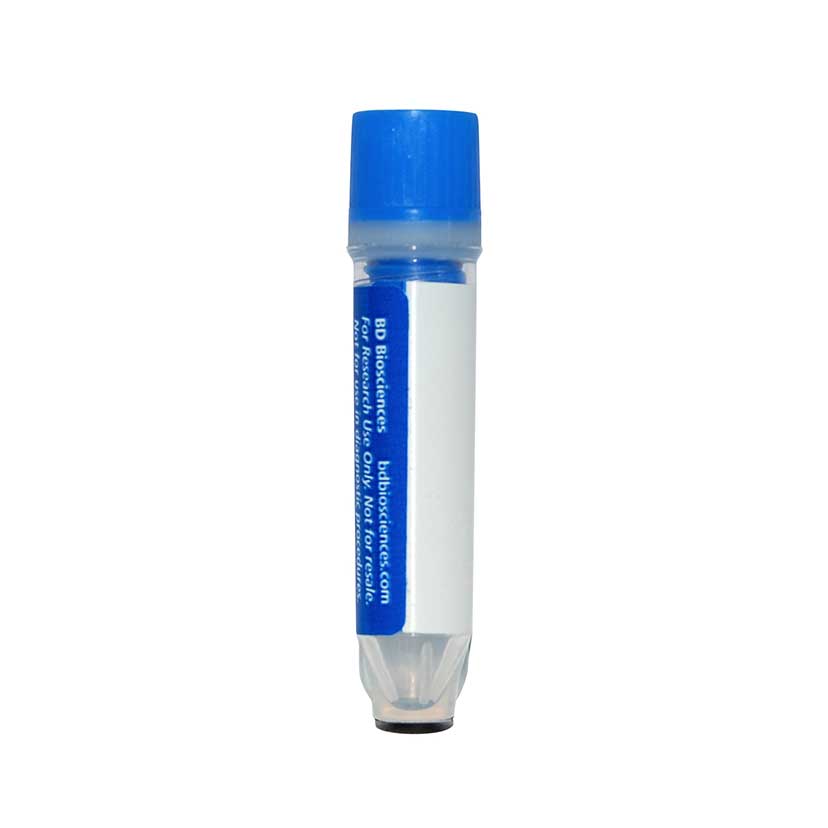-
Reagents
- Flow Cytometry Reagents
-
Western Blotting and Molecular Reagents
- Immunoassay Reagents
-
Single-Cell Multiomics Reagents
- BD® OMICS-Guard Sample Preservation Buffer
- BD® AbSeq Assay
- BD® Single-Cell Multiplexing Kit
- BD Rhapsody™ ATAC-Seq Assays
- BD Rhapsody™ Whole Transcriptome Analysis (WTA) Amplification Kit
- BD Rhapsody™ TCR/BCR Next Multiomic Assays
- BD Rhapsody™ Targeted mRNA Kits
- BD Rhapsody™ Accessory Kits
- BD® OMICS-One Protein Panels
- BD OMICS-One™ WTA Next Assay
-
Functional Assays
-
Microscopy and Imaging Reagents
-
Cell Preparation and Separation Reagents
Old Browser
This page has been recently translated and is available in French now.
Looks like you're visiting us from {countryName}.
Would you like to stay on the current location site or be switched to your location?
BD™ AbSeq Oligo Mouse Anti-Mouse CD229
Clone Ly9.7.144 (RUO)


Regulatory Status Legend
Any use of products other than the permitted use without the express written authorization of Becton, Dickinson and Company is strictly prohibited.
Preparation And Storage
Recommended Assay Procedures
Put all BD® AbSeq Reagents to be pooled into a Latch Rack for 500 µL Tubes (Thermo Fisher Scientific Cat. No. 4900). Arrange the tubes so that they can be easily uncapped and re-capped with an 8-Channel Screw Cap Tube Capper (Thermo Fisher Scientific Cat. No. 4105MAT) and the reagents aliquoted with a multi-channel pipette.
BD® AbSeq tubes should be centrifuged for ≥ 30 seconds at 400 × g to ensure removal of any content in the cap/tube threads prior to the first opening.
Product Notices
- This reagent has been pre-diluted for use at the recommended volume per test. Typical use is 2 µl for 1 × 10^6 cells in a 200-µl staining reaction.
- Source of all serum proteins is from USDA inspected abattoirs located in the United States.
- Caution: Sodium azide yields highly toxic hydrazoic acid under acidic conditions. Dilute azide compounds in running water before discarding to avoid accumulation of potentially explosive deposits in plumbing.
- The production process underwent stringent testing and validation to assure that it generates a high-quality conjugate with consistent performance and specific binding activity. However, verification testing has not been performed on all conjugate lots.
- Illumina is a trademark of Illumina, Inc.
- Please refer to http://regdocs.bd.com to access safety data sheets (SDS).
- Please refer to bd.com/genomics-resources for technical protocols.
- For U.S. patents that may apply, see bd.com/patents.
Companion Products






The LY9.7.144 monoclonal antibody specifically recognizes CD229 which is also known as SLAM family member 3 (SLAMF3), Lymphocyte antigen 9 (Ly-9), Lgp100, and T100. CD229 is a ~90-120 kDa type I transmembrane glycoprotein that is encoded by Ly9 (lymphocyte antigen 9) which belongs to the Signaling Lymphocytic Activation Molecule (SLAM) family within the immunoglobulin gene superfamily. The extracellular domain of CD229 contains four extracellular Ig-like domains (2 V-set and 2 C-set) extending in order from the N-terminus as V-C2-V-C2. The intracellular region of CD229 contains two ITSMs (immunoreceptor tyrosine-based switch motifs) and serves as a docking site for SH2-binding phosphatases and adapter molecules including SAP and EAT-2. CD229 is variably expressed on most thymocytes, T cells, NKT cells, B cells, NK cells, hematopoietic stem cells and progenitor cells, and monocytes. CD229 participates in homophilic adhesion interactions between these cells and in the regulation of their activation.
Development References (5)
-
Cuenca M, Punet-Ortiz J, Ruart M, Terhorst C, Engel P. Ly9 (SLAMF3) receptor differentially regulates iNKT cell development and activation in mice. Eur J Immunol. 2018; 48(1):99-105. (Clone-specific: Functional assay, Inhibition, In vivo exacerbation). View Reference
-
Romero X, Zapater N, Calvo M, et al. CD229 (Ly9) lymphocyte cell surface receptor interacts homophilically through its N-terminal domain and relocalizes to the immunological synapse. J Immunol. 2005; 174(11):7033-7042. (Biology: Cell differentiation). View Reference
-
Sandrin MS, Gumley TP, Henning MM, et al. Isolation and characterization of cDNA clones for mouse Ly-9.. J Immunol. 1992; 149(5):1636-41. (Biology). View Reference
-
Sintes J, Cuenca M, Romero X, et al. Cutting edge: Ly9 (CD229), a SLAM family receptor, negatively regulates the development of thymic innate memory-like CD8+ T and invariant NKT cells. J Immunol. 2013; 190(1):21-26. (Immunogen: Flow cytometry, Fluorescence quantitation, Inhibition, In vivo exacerbation). View Reference
-
Sintes J, Vidal-Laliena M, Romero X, Tovar V, Engel P. Characterization of mouse CD229 (Ly9), a leukocyte cell surface molecule of the CD150 (SLAM) family.. Tissue Antigens. 2007; 70(5):355-62. (Biology). View Reference
Please refer to Support Documents for Quality Certificates
Global - Refer to manufacturer's instructions for use and related User Manuals and Technical data sheets before using this products as described
Comparisons, where applicable, are made against older BD Technology, manual methods or are general performance claims. Comparisons are not made against non-BD technologies, unless otherwise noted.
For Research Use Only. Not for use in diagnostic or therapeutic procedures.